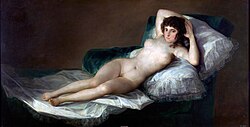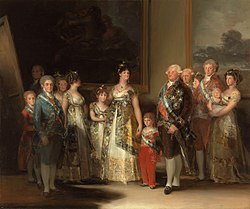Art and life
In several ways, the film looks back to Godard's 1963 film Contempt , about the tensions among a multinational team on location making a film that will never be completed. That film also had Michel Piccoli as one of the male leads and was shot by Raoul Coutard. It too oscillated between the demands of art, in that case a debased commercial version of an immortal work, and of life.
In Passion, the contrast between the two is clear. The world of the tableaux vivants is that of high art, of rich colours and forms embodied in costumes and props of beauty and accompanied by a soundtrack of masterpieces. That of people outside, both those making the film and those at the motel and the factory, is one where, though they may have ideals, they cannot escape everyday issues of survival, particularly sex and money. It is a world that is grey, wintry and often dull.
The artistic interludes in the film have no dialogue, just as the paintings they represent speak silently to viewers by means of form and colour. But the life of the film makers and townspeople suffers from lack of communication, with often incoherent conversations that are sometimes in different unsubtitled languages. One character has a stutter, another a hacking cough, one is mute, and the producer tries to talk to the director through a closed window.
Links are made between the world of imagination that is being created in the studio and the quotidian world of the characters. The characters playing the producer and the backer keep complaining that there is no plot. To which the director Jerzy replies that life does not have coherent plots, that things just happen, but it is art that can escape this grim cycle and is necessary for that reason.
Specific links between art and reality are seen at moments: the armed crusaders entering Constantinople are parallelled by the police suppressing the factory strike; the ship due to sail for Cythera is paired with a jet trail in the sky; the close-ups of Hanna in the motel are matched by zooms on to faces by Goya. Though life can be drab, full of tensions and misunderstandings, art can soar above it because it can convey pure emotion. [3] As Godard said in 1982: «Sometimes one has to film emotion, to fill the screen with pure emotion. Only painting and music can achieve that.» [4]
Light and dark
The opposition of light and dark first appears in the Night Watch, the first of the tableaux vivants, in the context of how light is distributed in the painting. Later on, during the Ingres episode, the two women Isabelle and Hanna are described by Jerzy as the opposition of night and day. According to him, Hanna is like the day, as she is opened towards everything, while Isabelle is like the night because she is difficult to reach.
The studio is the place governed by man-made light, whereas the places outside the studio are often shot in inadequate natural light. Yet the lighting of the tableaux vivants in the studio can never reach the qualities of pure natural light outside, and therefore remains artificial.











